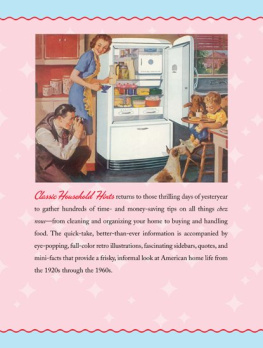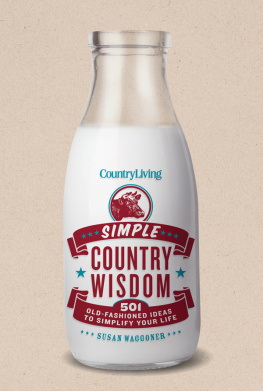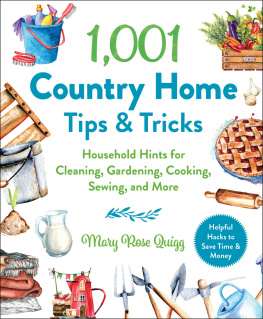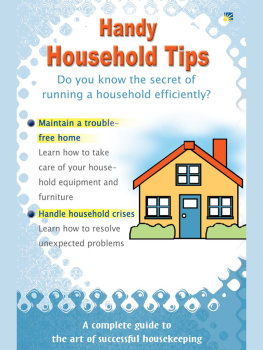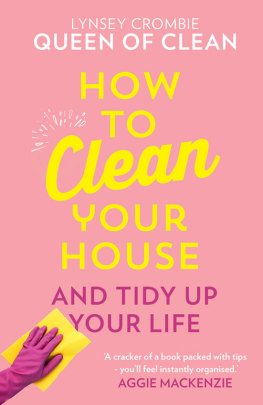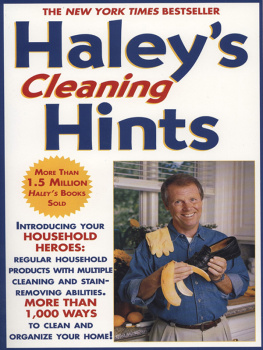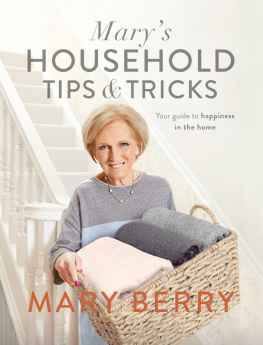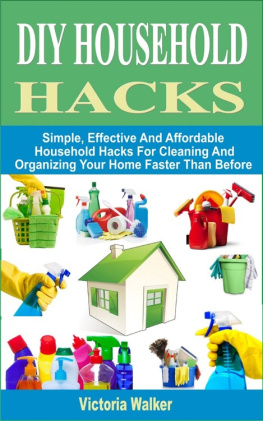




Published in 2007 by Stewart, Tabori & Chang An imprint of ABRAMS
Text copyright 2007 by Susan Waggoner
All rights reserved. No portion of this book may be reproduced, stored in a retrieval system, or transmitted in any form or by any means, mechanical, electronic, photocopying, recording, or otherwise, without written permission from the publisher.
The author and publisher of this book hereby disclaim responsibility for the improper use of any recipes, formulas, preparations and products appearing in this book.
Library of Congress Cataloging-in-Publication Data
Waggoner, Susan.
Classic household hints : over 500 old and new tips for a happier home.
p. cm.
Includes index.
ISBN 978-1-58479-572-8
1. Home economics. I. Title.
TX158.W34 2006
640dc22
2006033813

Editor: Dervla Kelly
Designer: Kay Schuckhart/Blond on Pond
Production Manager: Alexis Mentor

115 West 18th Street
New York, NY 10011
www.abramsbooks.com

Contents
First, a word from our sponsor...


No one who has spent any time at all reading old housekeeping manuals can doubt that we live in an age of splendors. Today, when most of us think roughing it means doing dishes by hand rather than in the dishwasher, its worth remembering that our grandmothers and great-grandmothers not only had to pump the water themselves; they then had to carry it into the kitchen, heat it, and later carry the dirty water back outside to dump it. One estimate, made at the end of the nineteenth century, found that the average homemaker walked 148 miles a year carrying 36 tons of water. She also spent four hours a day tending the stove. Not cooking on itthat was a whole other projectbut just feeding it the 50 pounds of wood and coal it required daily, emptying its ash box, adjusting its dampers, and rubbing it with blacking to forestall rust.
Is it any wonder these women were constantly in search of shortcuts? Of products that would clean better, faster, and with less roughening of hands?
They were remarkably resourceful. In the absence of modern detergents, paper towels, Tupperware, spray cleaners, stain-resistant fabrics, non-porous counters, refrigeration, and electricity, they managed to raise our grandparents and great-grandparents without starving or poisoning anyone. When innovations came along, they made the most of them. The first major electrical appliance, the wringer-washer of the 1930s, was quickly retrofitted to double as butter churn, ice-cream maker, and meat grinder.
CAUTION!
Because we live in an age of miracles, many of the objects in our homes are made of special materials and fibers, or have been treated with chemically engineered veneers, coatings, and applications to make them longer lasting and easier to clean. These items often require special care. Therefore, always, always, always check the manufacturers instructions for care and cleaning, and follow them to the letter. Even if you are sure your item does not require special care, always test a small, unnoticeable spot first before proceeding.

In the course of researching this book and testing hundreds of tips, I learned to be gratefulvery gratefulfor ordinary miracles such as plastic containers, which unlike their wood and glass predecessors, did not have crevices where bacteria could multiply in deadly force, and would not shatter when they slipped from young fingers that had reached for them too eagerly. The bottom line is: We may mourn the passing of home milk delivery, but no one misses finding frozen milk on the doorstep on a January morning.
Of course, I did not have to test every tip I came across. Many were simply impractical by todays standardsno one would lavish as much time or effort as the tip required to salvage an item that, these days, can be purchased new for a few dollars. We no longer need to save string, darn the holes in our socks, or paint old, soiled window shades to make them as good as new.
But we do have to clean, and most of us enjoy making our homes as efficient, comfortable, and comforting as possible. In this spirit, we offer these tips, culled from the past and near-present, for your perusal.


How to Clean a Room
Cleaning will be more efficient and effective if you follow these simple rules:

HAVE A PLAN. Dont just say, Im going to clean. Be specific. Which room are you going to work on and what will it take to get it cleaned? Does it need just a light dusting and straightening, or will you need to scrub the floors and wash the woodwork? Having a specific list of tasks makes success more likely.
PICK IT UP. It is almost impossible to get a cluttered room really clean, and 90 percent of your time is spent moving objects from one place to another. Start by picking up and putting away all the items that dont really belong there.
The first rule of this household is discipline.
Christopher Plummer lays down the law as Captain Von Trapp;
The Sound of Music, 1965
CLEAN IT ALL. Whether youre clearing a cluttered desk or an entire room, dont stop when its better or mostly done. If you do, it will still look cluttered, and as everyone knows, clutter begets more clutter. Its better to do a thorough job on a small area than an incomplete job on a larger area.
CLEAN TOP TO BOTTOM. Start by dusting cobwebs, ceiling fans, cornices, and cupboard tops and work downward, letting the dust fall beneath you, and ending with floors, baseboards, and rugs.
Next page
